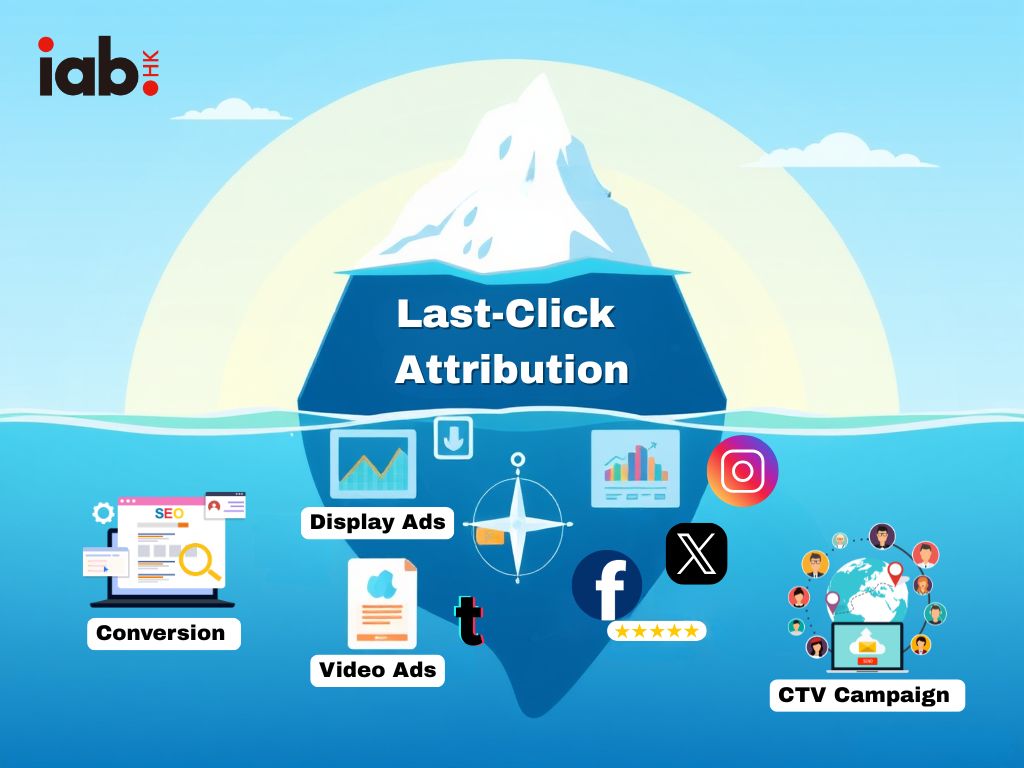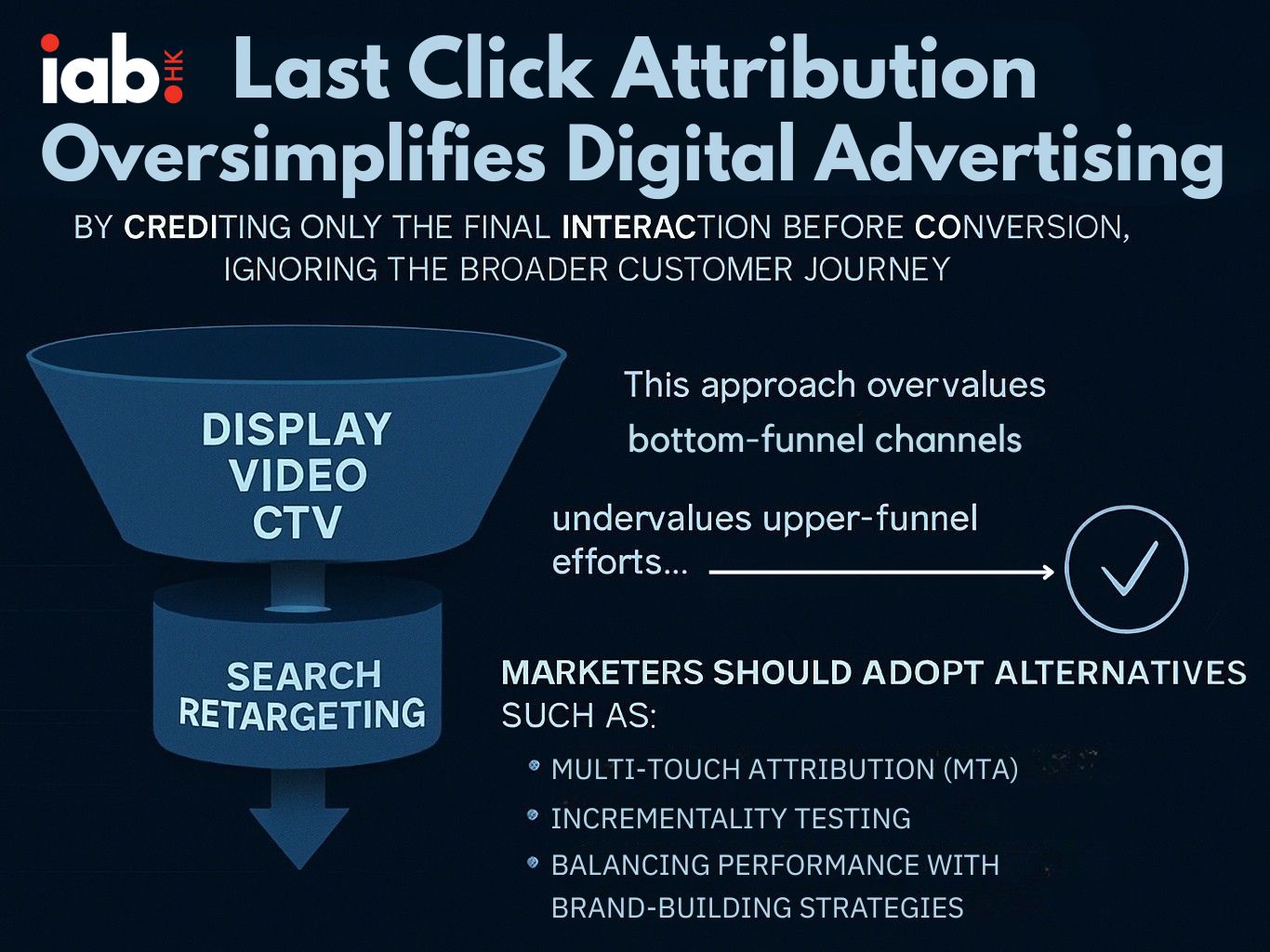The Attribution Iceberg: Why Last-Click Only Shows the Tip

The Illusion of Simplicity
In the fast-paced world of digital advertising, last-click attribution remains the default measurement tool for many marketers. It’s straightforward, easy to implement, and delivers seemingly clear results. But like an iceberg, what’s visible above the water—the final click before conversion—is only a tiny fraction of the full picture. To truly understand advertising effectiveness, we need to look beyond the surface. Last-click attribution only reveals the final interaction before a conversion, like the tip of an iceberg. What lies beneath the surface is a vast, complex ecosystem of touchpoints, all of which contributes to the customer journey. Ignoring these touchpoints distorts performance insights and ultimately leads to misallocated budgets.
At Quantcast, we’ve seen firsthand how overreliance on last-click:
✅ Over-credits bottom-funnel channels get all the credit (like paid search and retargeting)
✅ Undervalues upper-funnel influence (such as display, video, and CTV)
✅ Reinforces walled garden dominance (with Meta & Google soaking up ~80% of misattributed spend)
Last-click attribution creates a skewed perspective, favoring certain channels while neglecting others.
The Hidden Costs of Last-Click Attribution
1. Starving Brand Growth
Last-click attribution disproportionately rewards performance tactics while ignoring the upper-funnel strategies that drive long-term success. Think about the awareness-building power of display or video ads — efforts that may not lead to an immediate click but plant the seed for future conversions.. In fact, one study found that 67% of conversions driven by display ads received no credit under a last-click model. This means that campaigns that fuel interest and consideration are being starved of budget—simply because they didn’t deliver the final click.
2. Bias Toward Walled Gardens
Platforms like Meta and Google dominate last-click reports because they “own” the final click—even when other channels laid the groundwork. This creates a problematic feedback loop—budgets increasingly favor the dominant players, making it harder for other channels to prove their value or compete.
3. Fake Precision, Real Blind Spots
Last-click attribution may feel precise, but it paints an incomplete picture. Consider this example:
- A consumer watches a CTV ad (no click)
- Later, they search the brand on Google (click)
- Last-click gives 100% credit to search—completely ignoring CTV’s influence.
This illusion of clarity hides the true drivers of performance, leading marketers to invest in tactics that may not actually move the needle. 
What Marketers Can Do Instead
Given the clear limitations of last-click, what alternatives can marketers adopt? Here are some effective, more holistic strategies:
1. Adopt Multi-Touch Attribution (MTA)
- Instead of assigning all credit to the final click, MTA distributes fractional credit across all touchpoints. It helps marketers see how different channels (like display, social, video, and CTV) work together to drive conversions. It enables more informed budget allocations and effective optimization. For instance, one FMCG brand used MTA insights to reallocate 30% of its search spend to CTV, leading to a 22% increase in total conversions.
2. Use Incrementality Testing
- Incrementality helps answer the question: “What would have happened if I hadn’t run this campaign?” By comparing exposed vs. unexposed groups, , incrementality testing isolates true campaign impact beyond vanity metrics like clicks or impressions. It’s a powerful way to identify which efforts are genuinely driving conversions.
3. Balance Performance with Brand Building
- By pairing last-click attribution data with brand lift studies and long-term sales impact analysis, marketers can make better strategic decisions that support both immediate goals and sustained success.
The Way Forward: Dive Deeper
The industry’s dependence on last-click attribution isn’t just outdated—it’s actively hurting performance, costing brands revenue and stifling innovation. By embracing a more comprehensive approach to measurement, marketers can:
- Accurately credit all contributors—media vendors, publishers, and ad tech
- Optimize campaigns for true incremental growth
- Reduce dependence on walled garden and build more diversified media strategies
The bottom line: If you’re only measuring the tip of the iceberg, you’re making critical decisions with incomplete information. It’s time to dive deeper, uncover the full picture, and reevaluate what drives marketing success.
Author: Sally Ng
Article launched on 28/4/2025 |
|
APPENDIX
About the IAB (Hong Kong)
The Interactive Advertising Bureau (Hong Kong) empowers the media and marketing industries in Hong Kong, to thrive in the digital economy. It is comprised of more than 100 leading media and technology companies that are responsible for selling, delivering, and optimizing digital campaigns. Working with its member companies, the IAB (Hong Kong) evaluates and recommends standards and practices and fields critical research on interactive advertising.
Please address any questions or comments about this blog to
IAB (Hong Kong) Secretariat Office- info@iabhongkong.com


